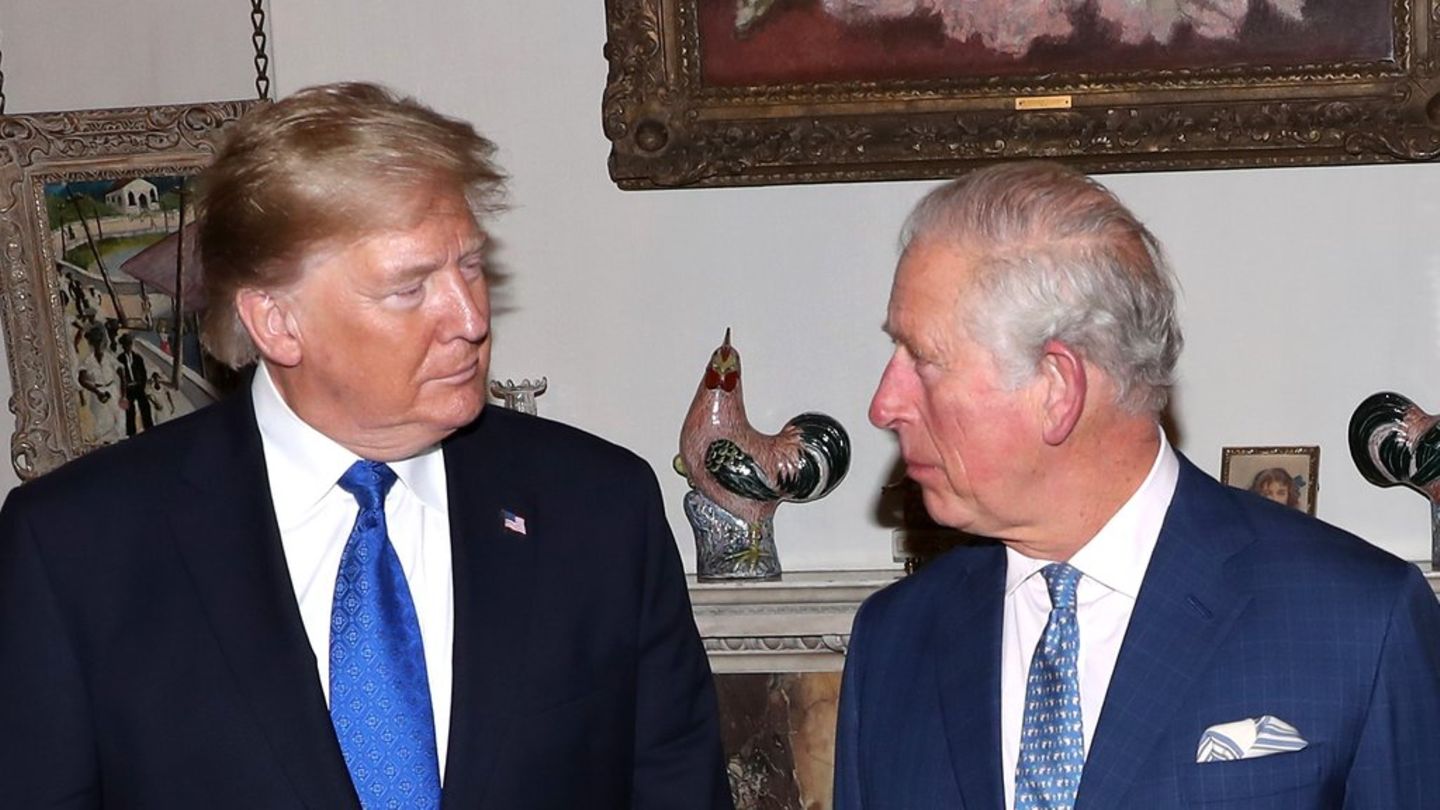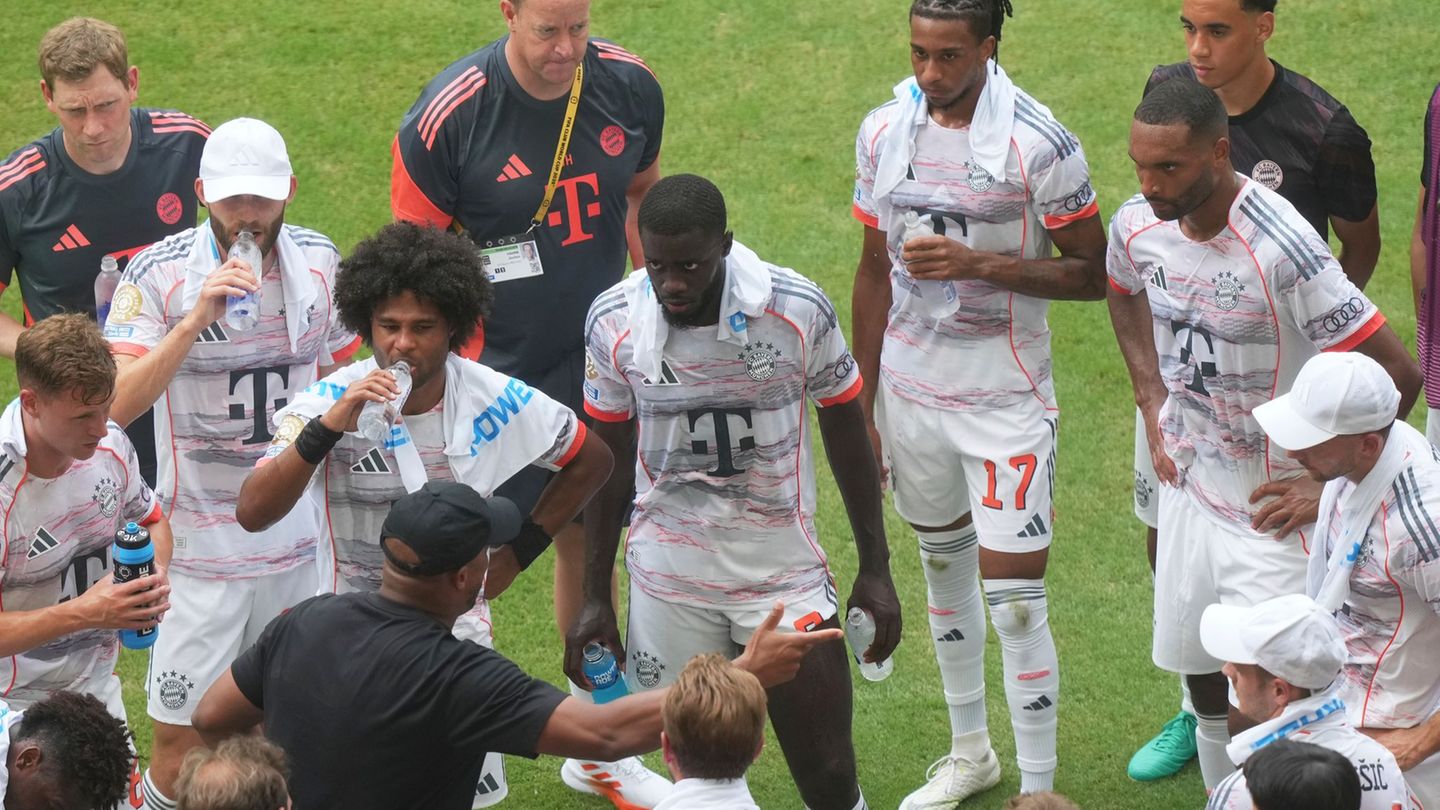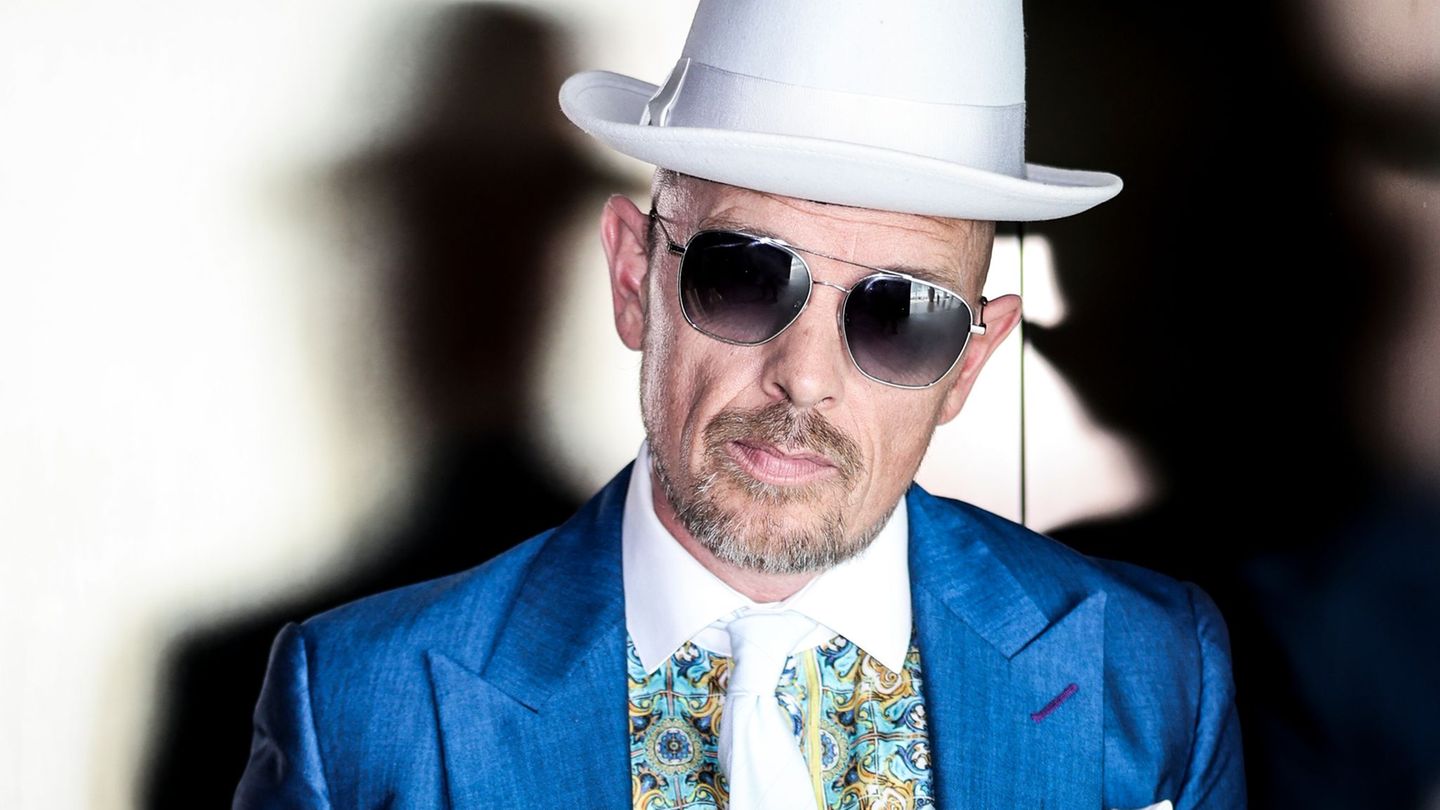And he also explained how the business strategy was that allowed them move from inorganic vertical growth to orderly expansionwhich will add an important milestone in December of this year with the opening of a branch in Miami.
Journalist: What is the Támesis Group?
German Sitz: It is the group that brings together the administration, control and management of our restaurants. There are currently seven, of which six are on Thames Street. The first one we opened was La Carnicería. Then we opened the choripanería Chori, which has a hamburger concept but brought to our national sandwich.
Then came Niño Gordo, which is a grill brought to the flavors of Asia. Then we opened Paquito, which is a Madrid restaurant, unlike what we are used to here, which is usually Spanish but Basque or Galician. This follows the concept of a typical Madrid tapas and beer bar, with a modern style.
The fifth one we opened was the Juan Pedro Caballero taqueria, which is a churrería and taqueria. And then we have Jardines de Las Barquín, in the gardens of the Fernández Blanco Museum. And the last one we opened is José el Carnicero, where we show the ways of grilling in Argentina: the grill and the rotisserie. Two completely different ways of grilling, but both very Argentine.
Q: What business strategy does this diversification of proposals follow?
GS: The first reading comes from what we like to do. It has to fit with that. And the second is to see the market need, whether or not that need exists. Maybe you would like to do such a thing, but then if you see that there is no audience for it, it is better to do it in the garden of your house for you and your friends, not as a business.
After that, we look for a way to make it different from everything that is being offered on the market. So as not to compete with exactly the same product. Otherwise you enter a competition that is only differentiated by price.
This is how we are creating a difference in concept, taking into account these market factors that are already giving you a framework to manage yourself. And then we build the differentials based on the premises that I mentioned first.
Furthermore, the idea is to cover a larger audience. Chori’s customer is not the same as that of La Carnicería or Las Barquín. This way you can make the cake bigger, the range of audiences you are speaking to. And once you have it in one of the stores, for example in Las Barquín, you can communicate another type of proposal, such as José or Carnicería, and take it to another format so that it can consume another of your products.
Q: What is the concept you developed behind each restaurant?
GS: We take Argentine meat as a basis as a differential. This is how we began to develop the other concepts. Chori is rooted in Argentine custom, but much is derived from the concept of meat, the Argentine barbecue. We saw that there was no consumption of choripan in the City, unless you went to look for it on the Costanera. But there were many hamburger restaurants. And that’s why we looked for that little place that was available on the market.
The same thing happened with Fat Boy. There were already many grills. But there were none that brought that concept to the Asian style, when everyone was looking for those types of flavors but only fell into sushi. That’s why we seek to combine the grill with oriental flavors. This is how we developed the concepts of our different restaurants.
Niño Gordo is perhaps the best known. It has been making great leaps in customer growth. And that’s why you see a lot of tourists arriving too. But La Carnicería also has a large influx of tourists, and proportionally, because it is a smaller place, the number of tourists is greater than in Niño Gordo.
Q: How is the Grupo Támesis operation linked to the family meat businesses?
GS: The meat production that my family generates in La Pampa was one of the issues that gave us the basis to form the concept when we built the first store, which was La Carnicería. It is a company that is managed by the fourth generation of the family. This added to the concept of fire and meat, which I think are two great “country brands.” And this tradition of Argentine meat is something that marked me as a family and cultural history.
Q: Who in your family runs the company?
GS: There’s my mom. But my family is part of a cooperative that my grandparents formed at that time, which are five families with agricultural production. One of those families today has a very large refrigerator that does the work for us. Although my family continues to raise cattle, they also entered the dairy business. Another family has cabins in which we leverage a lot to supply steers.
Q: Do you plan to continue expanding by opening more restaurants?
GS: I think expansion and order are two things that I don’t think go hand in hand. For example, in the world of wine there is now talk of the verticality of the business. This is similar, the verticality that gives growth and the order that goes towards the width. It requires achieving a lot of balance because if you generate too much order without growing much, you end up with a very heavy structure that is difficult to work with.
When you find the right point between growing vertically and growing towards the width you need to be able to sustain that verticality, you are hitting the right button. I think today is the greatest challenge we have.
In the first stage we worked only on the verticality of the business, since we gave the order ourselves. But order is very similar to control. It is a photo of a moment of a reality that you create. But all kinds of things can still be happening without you realizing it. Even if you pay attention all day, when you blink something happens. Furthermore, you cannot be covering all sectors of vertical growth.
Now we are closer to that balance and that helps us continue our expansion. Four months ago we opened José el Carnicero in Palermo. And now we are planning to open a Niño Gordo branch in Miami. The idea is to reach December with a pre-opening and start training people.
Q: What is the structure of the Thames Group that allows you to generate the order that sustains vertical growth?
GS: We have an Operations management, with an assistant, a trainer. Here we also have two chefs who do checks in the areas of cleaning, stock, and implementation of new dishes.
There is a Human Resources department, which also has a sociologist, who works with the kids in all aspects of interviews, salaries, training, and performance evaluation.
On the other hand, there is a Management department, which manages treasury, purchases, preparation of reports, budgets, and stocks. At the same time, it is also in charge of a production and warehouse center. What all the restaurants do is buy from Grupo Támesis all the merchandise and supplies they need.
On the other hand, we have a creation team where we work with an R&D creation chef, we have our own design agency, an animator, a social media manager, and a set designer.
The set designer’s task has to do with the aesthetics of each restaurant. From everything you can see as a feature of Niño Gordo, to the choice of chairs for the venues. Now a big change is coming for Las Barquín.
Above this structure, the partners are three assistant operators. I am more in charge of the entire area of operations, human resources, and communication. Another partner is in charge of the administration and management part. And a third partner who deals with new creations, innovation.
Q: Does maintaining this well-organized business structure leave you time available for cooking?
GS: Yes, there is some time left. I usually cook at La Carnicería. But the thing is that sometimes it is difficult to get into a team that is working, because it involves removing someone from their task. That’s what costs the most. But being in the kitchen allows you to see the entire process up close and know how to deal with any problem that may arise.
We have about 160 people working with us, taking into account the premises and the structure of Thames. The majority are in Niño Gordo, with more than 30. In La Carnicería there are 12 people. And in José Carnicero another 12. This is how they add up.
Q: What was the decision to go from being a chef to a gastronomic entrepreneur?
GS: I was a chef for quite some time. Like 10 years of being a chef. At 17 I started as a professional cook, earning money for my work. I worked for big restaurants in the country, for big hotels in the country. Also in season in Uruguay. I worked in large restaurants abroad with three Michelin stars. After reaching that level, it seems that you reached what you were looking for. But I realized that it was not what I was looking for.
Q: What happened when you reached that high ceiling?
GS: It’s like playing football for Inter or Barcelona. And discovering that you no longer enjoy playing football as much. At first, it seemed that my problem was that I was not playing for Barcelona, because I played for Sacachispas, then for River, or for Corinthians. And I wanted to get to Barcelona. And when I arrived I saw that it wasn’t very different, that it was always playing football. That’s when I started to doubt.
But I didn’t know if I wanted to have my restaurant either. I also worked with great chefs who had a great product but a structure that was perhaps small. And I saw that and realized that that was not an option that would solve your life either. Because of this, I didn’t see my future as a restaurant owner.
But I finally decided to do it. I was thinking of a more commercial proposal. And talking with my partner Pedro Peña, who is also a chef, and also wanted to open a restaurant, he suggested that I do something different, not something classic commercial. And we began to develop the La Carnicería project, with my family’s entire history as livestock producers behind it. That allowed us to develop the concept of the restaurant and also the traceability of the meat, based on the supply of my family’s company called Los Abuelos.
Q: How does the chef coexist with the businessman?
GS: What I like most is being a chef. I also like being a businessman, it has its interesting part. When I was a chef I wasn’t bored with cooking, what bored me was not seeing something beyond as a future. And it is something that does allow you to see the activity of an entrepreneur. You look for connections, put a spark of drive and create something new. That’s what excites me about this role.
Sometimes my partner Pedro comes with an idea that is a little crazy compared to the normal scene, I bring him down to earth a little thinking about how much needs to be invested, how it should be put together, and we go out to look for an investor or we invest depending on the amount. . And so we began to develop the concept that he originally brought, and put together a business plan to make it feasible. So, maybe in just six months you are developing a totally new product.
Q: How did the idea of developing the premises on Thames Street come about?
GS: At the beginning it was by chance, after we rented the first location, which is today La Carnicería. And then when we started looking for a place to put Chori, we looked in the area. First I was going to be in Borges. But the rent fell and we looked for another place. Afterwards, going back and forth between the seven blocks between La Carnicería and Chori, we saw available places and we took them. It was a time when the verticality of growth was everything, we grabbed everything that appeared available and then saw if we were ordered or not to do it.
And so we took space on Thames, for what came next, Niño Gordo, Paquito, Pedro Caballero, José. And by chance, the opportunity for Las Barquín appeared, in Suipacha and Arroyo, which was outside the area.
Apart from our premises, other projects in the area were later added. Like the guys from the Tres Monos bar, who told us that they were looking at a place in Thames and we encouraged them to set up shop. So we remain a bit like curators of what comes into the neighborhood. There are many friends who are wanting to open stores and we let them know if something becomes available or we reserve it directly. This is how a quality gastronomic hub is being created that we want to take care of.
Source: Ambito
I am a 24-year-old writer and journalist who has been working in the news industry for the past two years. I write primarily about market news, so if you’re looking for insights into what’s going on in the stock market or economic indicators, you’ve come to the right place. I also dabble in writing articles on lifestyle trends and pop culture news.




